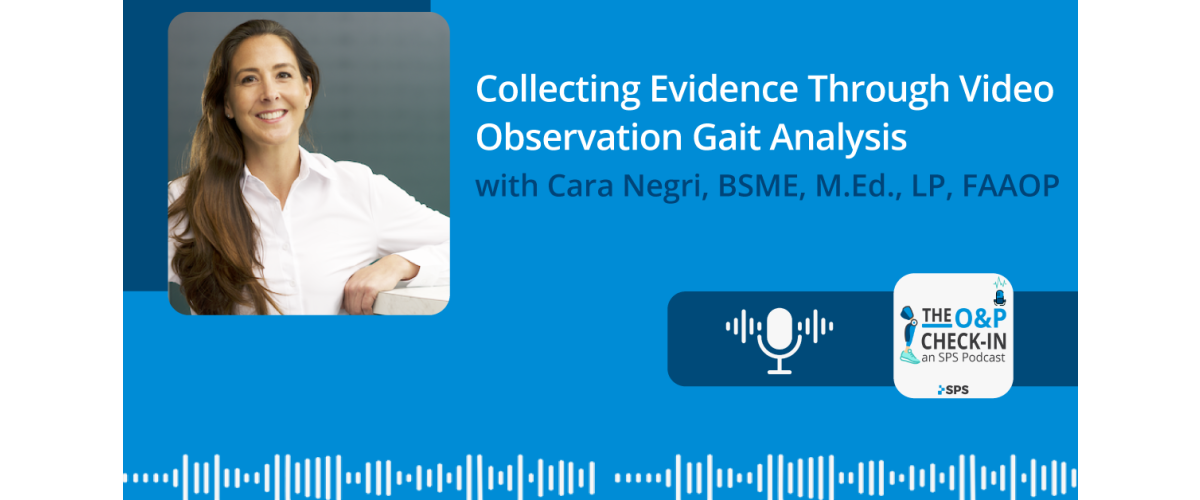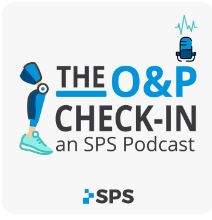Video Observation Gait Analysis (VOGA) is often used by clinicians to identify and investigate gait problems in their patients. In this O&P Check-in: an SPS Podcast interview, Cara Negri, BSME, M.Ed., LP, FAAOP, shares her insights on how clinicians can harness the power of VOGA for documentation, intervention, and justification.
The following includes an excerpt from our conversation, edited for length and clarity. Click here to listen to the full interview.
The O&P Check-in: an SPS Podcast unpacks trends and stories from the tight-knit community of O&P professionals. From patient care to technology, best practices, and regulations, this podcast features topics that help you stay current.
What are the benefits of using VOGA in practice?
VOGA is one of the first measurement tools I use to examine step length differences. Through the use of video, I’m able to show the patient what I’m seeing, such as "You are taking a 54% bigger step on the sound side than you are on your affected side.” If there is an asymmetry in step length, I go back and look at where that is coming from. Is it coming from the hip? Is it coming from the knee? What can I do about it? By capturing a video, I’m able to analyze the patient’s gait at any time and even ask my colleagues for their input if I want a different perspective.
VOGA is a quick and practical tool we can use to show we have affected a patient's mobility, such as making their gait more symmetrical, correcting medial or lateral whip, instability, etc. I have submitted VOGA for insurance claims and use it as a marketing tool for my referral sources. I also use it to communicate with my PTs. After a patient sees me, I can share their report with their PT to inform them of their progress and any areas that need strengthening. It's a bit of an interdisciplinary care tool as well.
Are there any barriers for a clinician to utilize this kind of video software?
The barriers I have encountered are that it can be overwhelming to start collecting video on each patient and ensuring it’s being used and stored in a HIPAA compliant way. We have made it a part of our practice that before we do anything with a patient, we get their release form and take a video of how they're walking. Don't feel like you have to analyze it, create a report, or do anything with it. Create a system for collecting and storing the video in a way that will be easy for you to access in the future because you can use video for your appeal and make a report from it for up to seven years.
In your experience, how can clinicians get the most out of VOGA?
Start simply, and don't overwhelm yourself. Try starting with one patient population. Let's say you're going to look at all your pediatric AFOs—begin with a specific diagnosis and build from there.
Again, start collecting the video. The more you collect, the more curious you'll become, and you'll want to start analyzing it. My suggestion would be to have a specific plan for how you're going to approach it, who's going to take the video, how it's going to be stored, and how you're going to name the files.
To hear the full conversation, click here.
Learn more Cara’s work at PnO Data Solutions and Gainesville Prosthetics.


